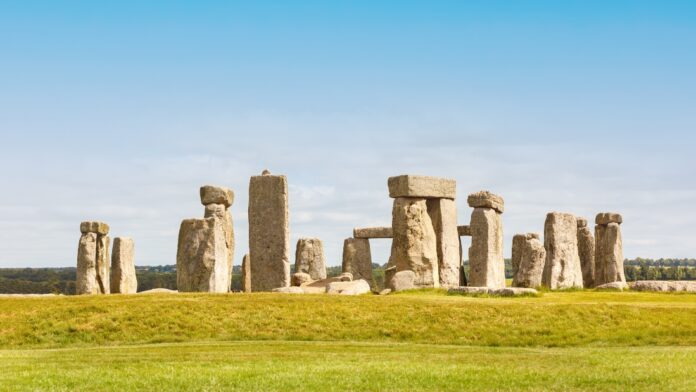LONDON: The design of Stonehenge, the famous prehistoric stone monument in the UK, could have been inspired by Ancient Egyptian practices, new research has suggested.
For decades, academics have believed that the arrangement of the stones was designed to mark the seasons, with Britons hosting solstice festivals at the monument.
But Prof. Timothy Darvill, an academic at Bournemouth University, has argued in the Antiquity journal that the population of southern Britain in the third millennium BC had gained knowledge about calendar methods developed in Egypt and Mesopotamia.
His analysis focuses on the large gray-green “sarsen” stones that ancient Britons added to the site in 2,500 BC, with Darvill arguing that they added them to mark a calendar year of 12 months, each of 30 days.
He believes that each day was represented by one of 30 stones in a circle, but not all of the stones remain.
However, the “sarsen” stones do not complete the picture, as the ancient Britons would need five more days to reach 365.
These additional days would have been represented by five “trilithon” stone arches, complete in a horseshoe shape in the center of the monument.
The site also boasts four “station” stones beyond the sarsen circle, which Darvill believes were added to count leap days, and would also measure winter and summer solstices.
The design is similar to the “civil calendar” that was developed in Ancient Egypt amid an era of exaltation for the sun god Ra. It was completed by approximately 2,650 BC.
It could have been exported to the British Isles, as analysis of ancient DNA and other leading archaeological strategies have exposed great population movement during the third millennium BC, Darvill said.
While Stonehenge took over 1,500 years to be fully created, Darvill’s team has found that all of the elements of the proposed calendar were gathered during the same period.
“People have talked about it being a calendar for a long time, but nobody’s ever come up with a scheme that works,” he said.
“This is the first time we’ve got something which makes sense in terms of using the stones that are there contemporaneously — a lot of earlier attempts combined bits of the monument which were never visible or used at the same time.”

